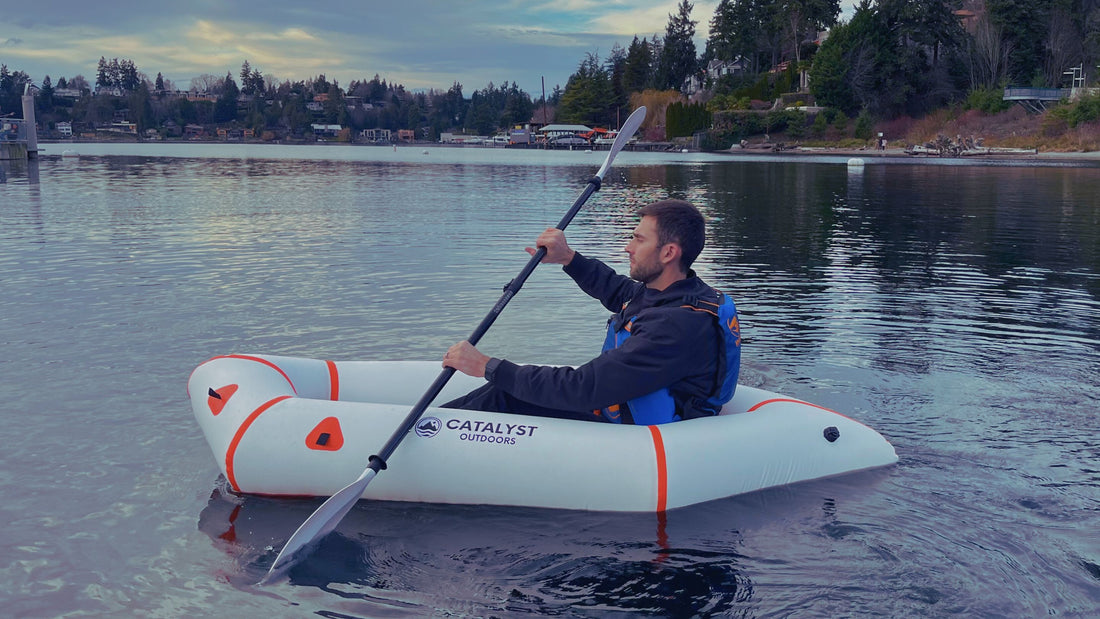Kayaks and packrafts are both types of watercraft, but they differ in several key aspects, including design, purpose, portability, and usage. Here are some of the main differences between kayaks and packrafts:
-
Design and Construction:
-
Kayaks: Kayaks are typically rigid, hard-shell boats made of materials like plastic, fiberglass, or composite materials. They have a closed cockpit, with the paddler sitting inside the boat and often using a spray skirt to stay dry.
-
Packrafts: Packrafts are inflatable boats made of lightweight, durable materials. They can be quickly inflated and deflated, and their design often includes an open cockpit.
-
Portability:
-
Kayaks: Traditional kayaks can be less portable due to their rigid construction. They require roof racks or trailers for transportation and are generally not designed for easy carrying over long distances.
-
Packrafts: One of the key features of packrafts is their portability. They are designed to be lightweight and packable, making them suitable for activities like backpacking, where they can be carried in a backpack.
-
Intended Use:
-
Kayaks: Kayaks are versatile and can be used for various water activities, including recreational paddling, touring, sea kayaking, and whitewater kayaking.
-
Packrafts: Packrafts are designed for versatility as well, but they are particularly well-suited for backcountry adventures. They are often used in conjunction with other activities like hiking and biking.
-
Versatility:
-
Kayaks: Kayaks come in different types, each specialized for specific purposes. For example, sea kayaks are designed for open water, while whitewater kayaks are built for navigating rapids.
-
Packrafts: Packrafts are generally more versatile in terms of the variety of water bodies they can navigate, from calm lakes to whitewater rivers. They are designed to handle a range of conditions.
-
Ease of Learning:
-
Kayaks: Learning to paddle a kayak may have a steeper learning curve, especially for beginners, due to the closed cockpit and the need for specific paddling techniques.
-
Packrafts: Packrafting is often considered more accessible to beginners. The open design and inflatable nature make them stable and forgiving, requiring less technical skill for basic use.
-
Safety and Stability:
-
Kayaks: Kayaks can offer high stability, especially in calm water. However, stability can vary depending on the type of kayak and water conditions.
-
Packrafts: Packrafts are generally stable and forgiving, making them suitable for beginners. However, they may not provide the same level of stability as certain types of kayaks in calm water.
-
Environmental Impact:
-
Kayaks: Hard-shell kayaks have a more significant environmental impact in terms of manufacturing materials and transportation. However, they are durable and can have a longer lifespan.
-
Packrafts: Packrafts, being inflatable, have a lower environmental impact during transportation and manufacturing. However, their durability may be lower compared to hard-shell kayaks.
Both kayaks and packrafts have their advantages and are suitable for different purposes. The choice between them depends on the individual's preferences, the type of water activities they plan to undertake, and the specific conditions of their adventures.

